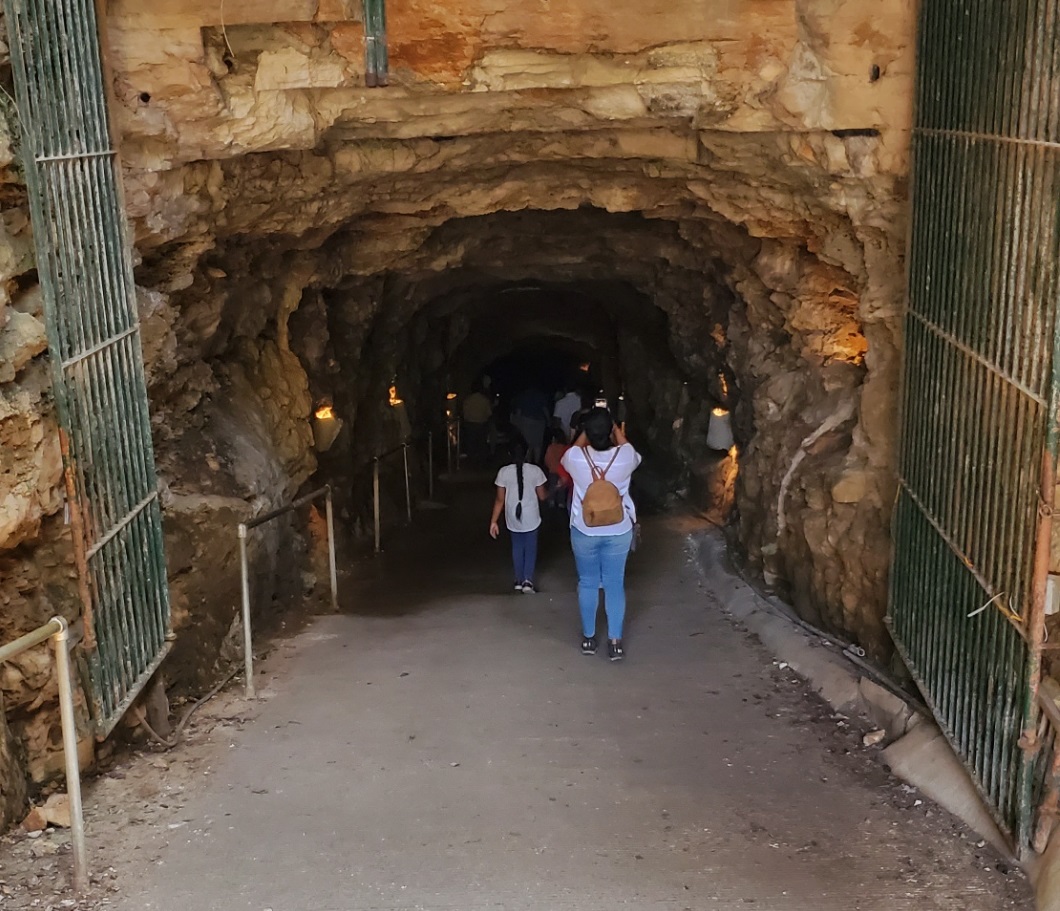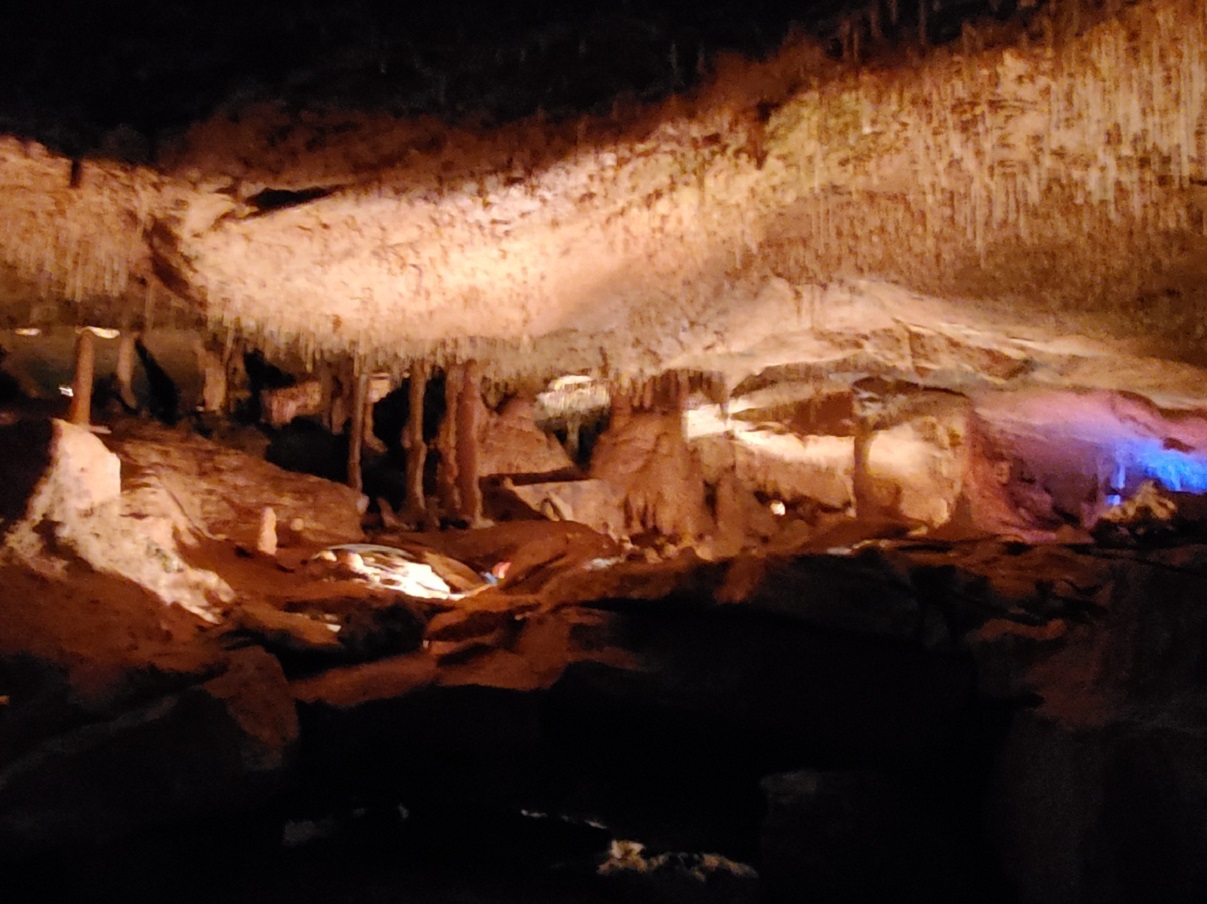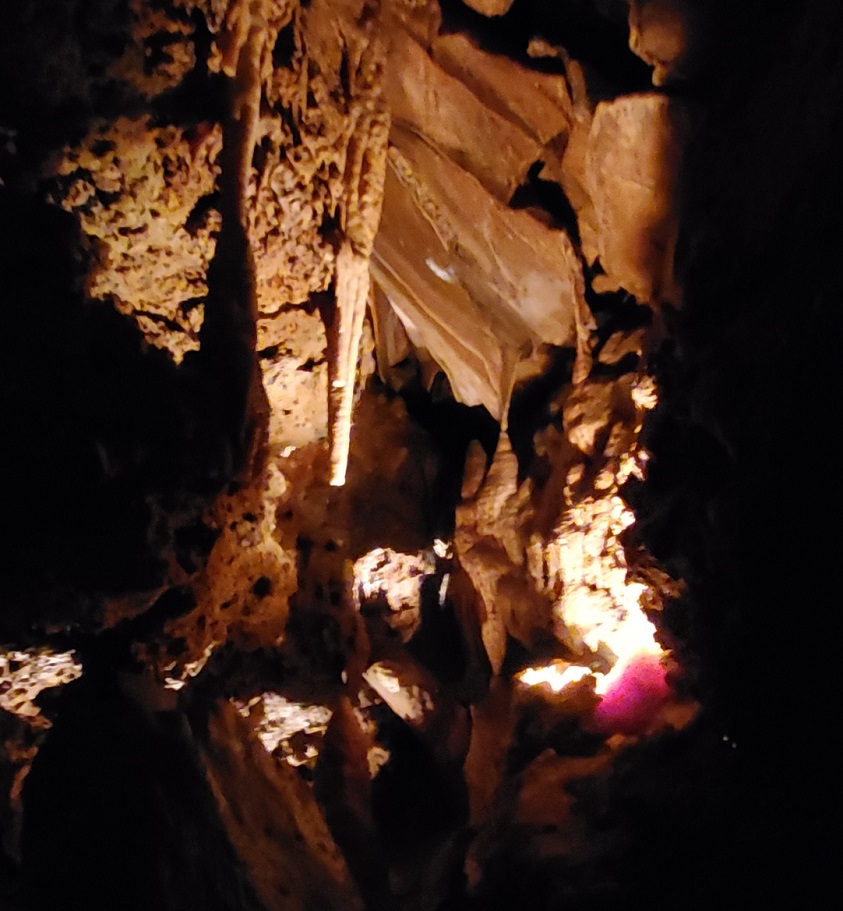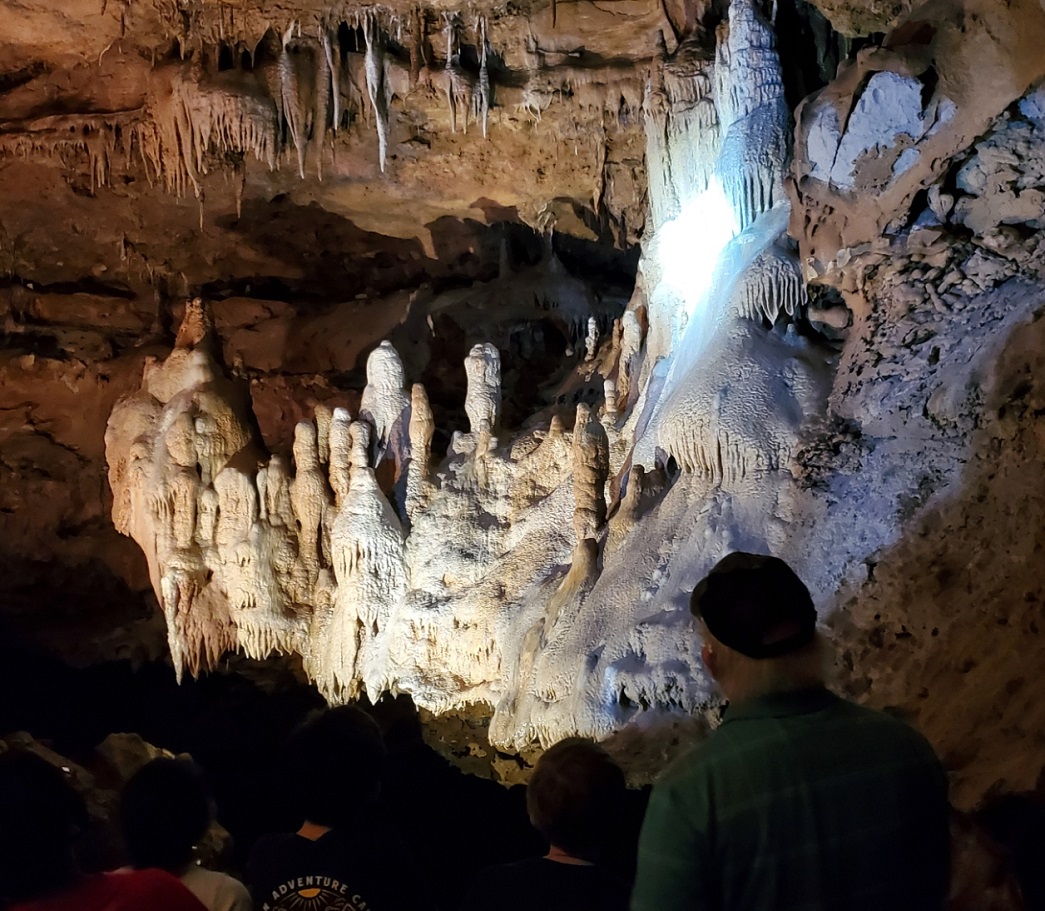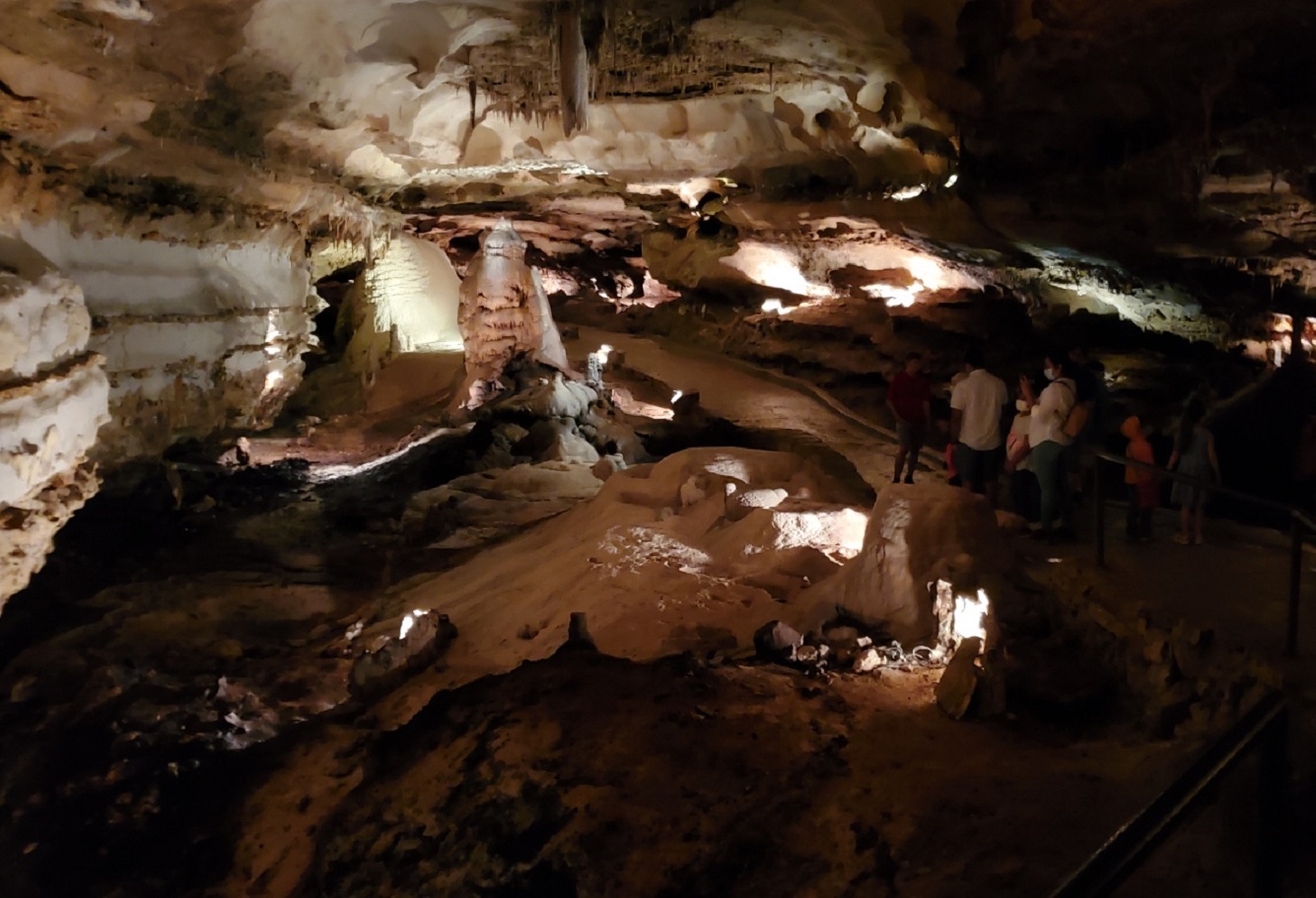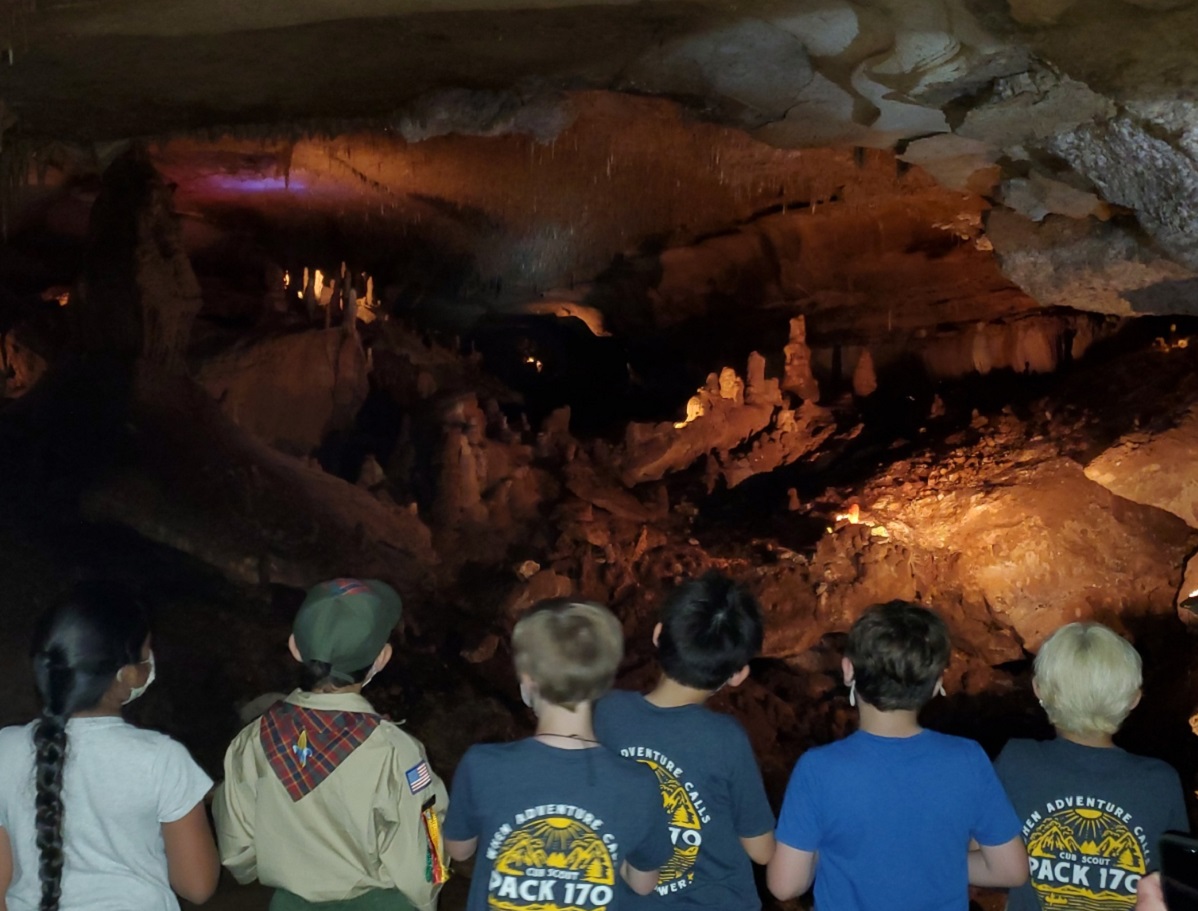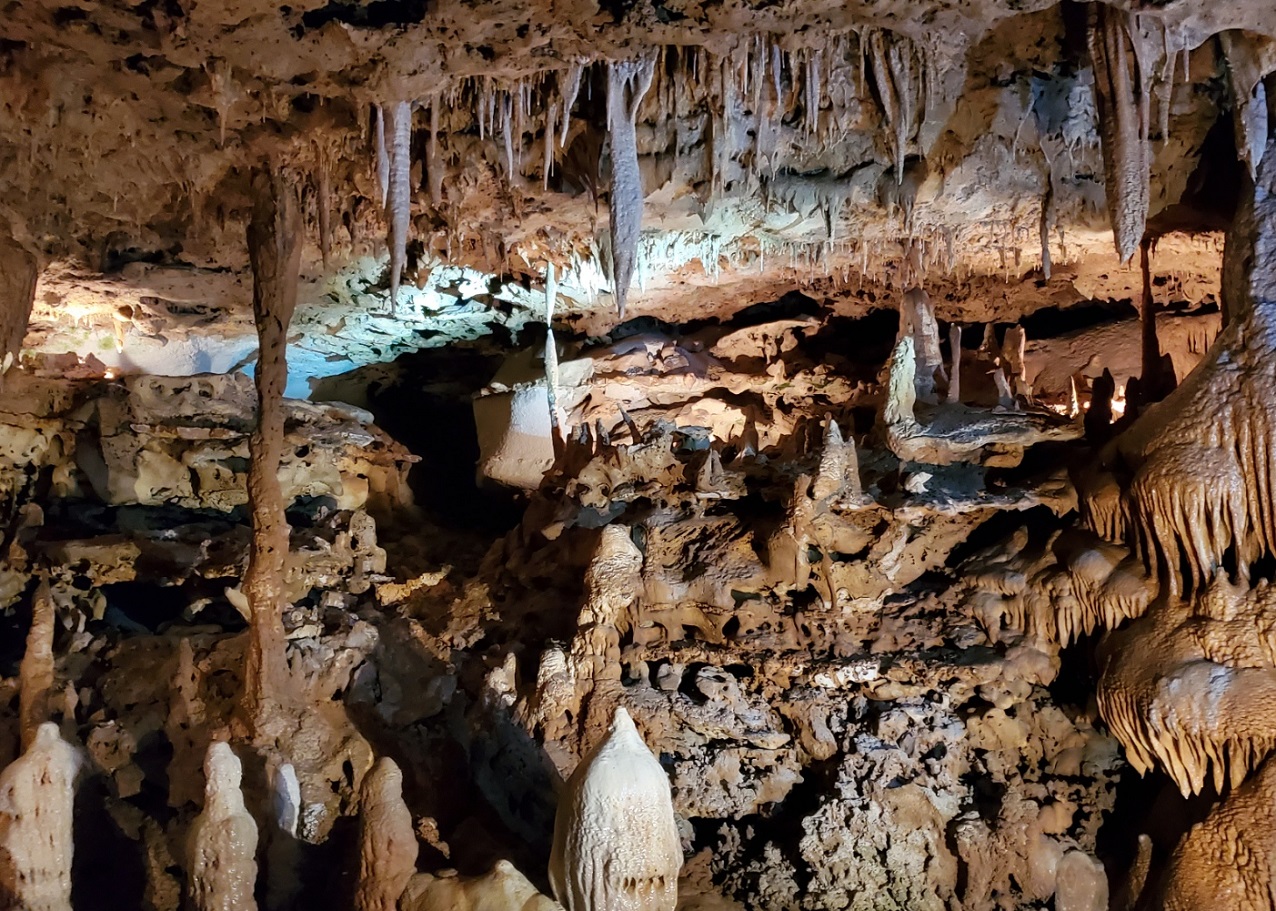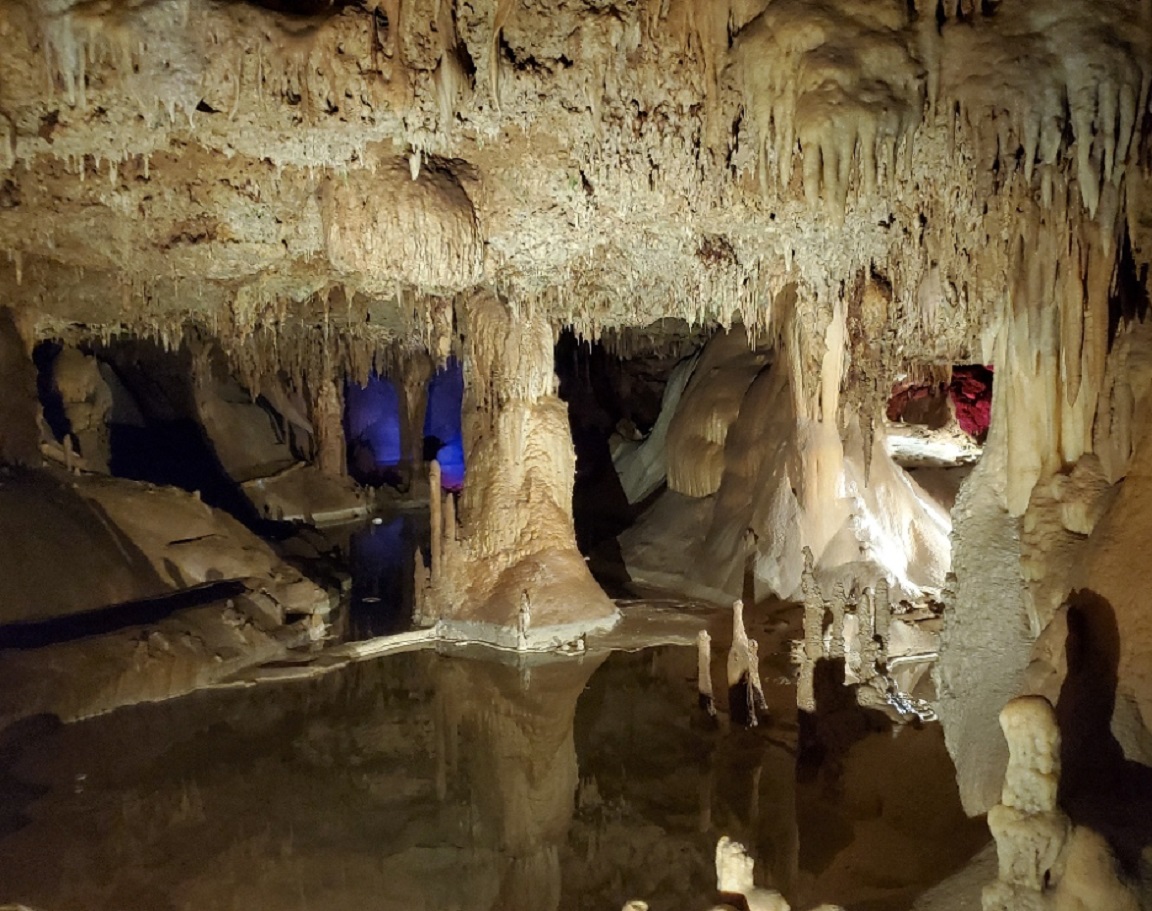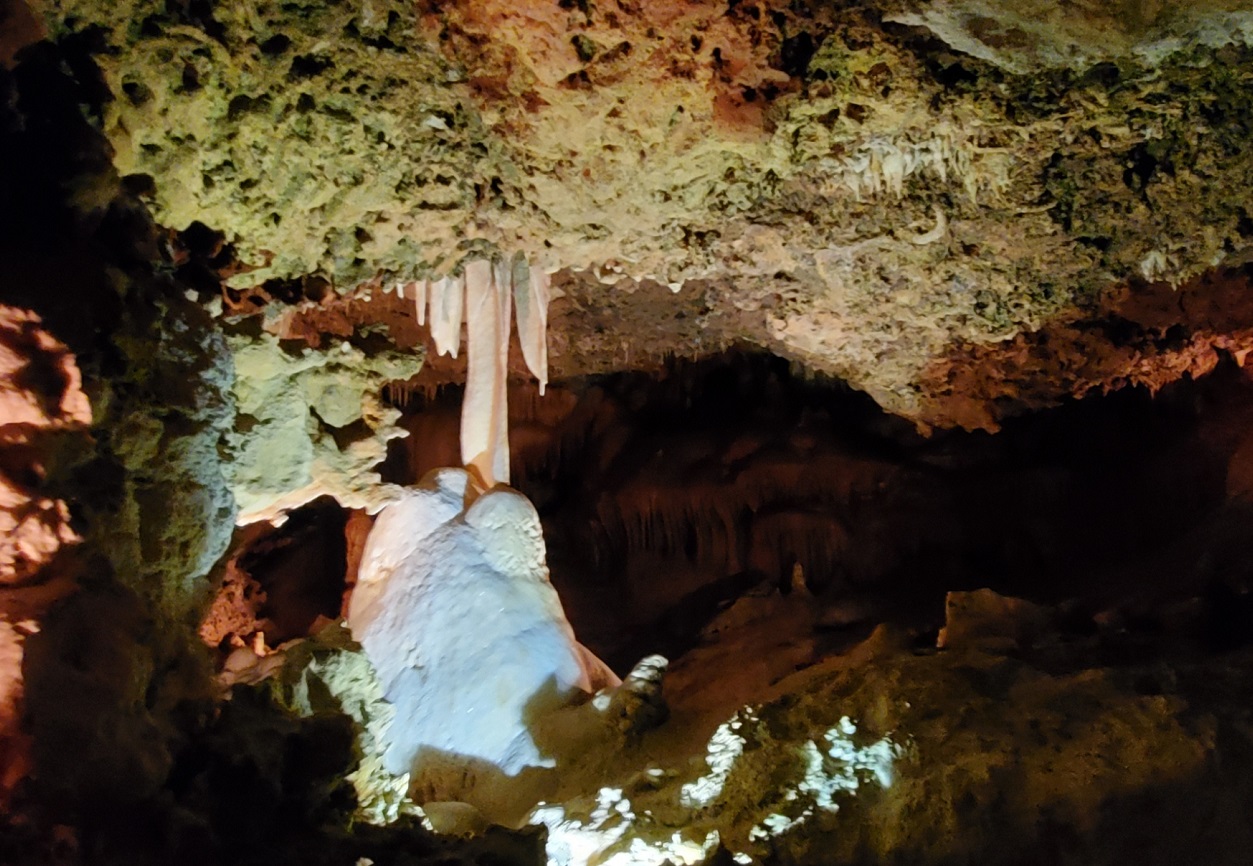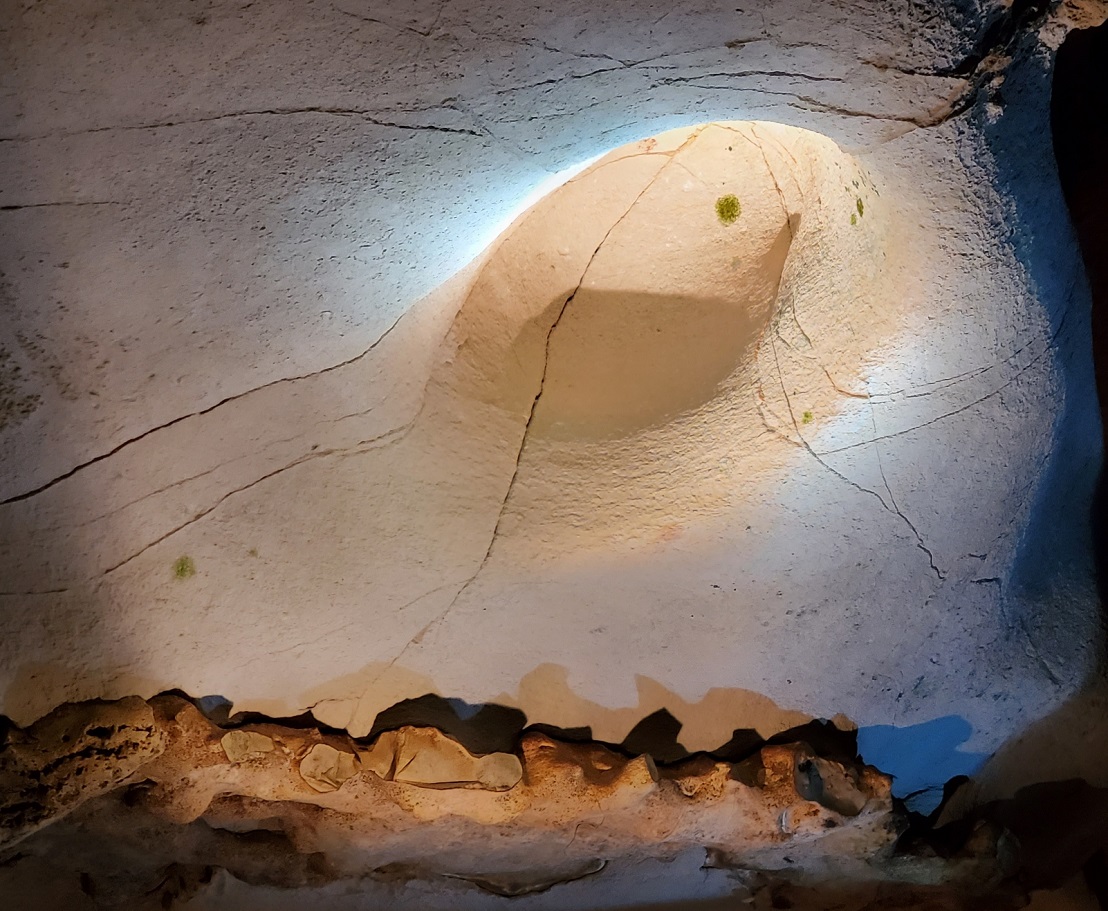Q: What’s hard on the outside, airy on the inside, wet, dry, mostly light colored, and totally dark?
A: A CAVE!
Scouts from Pack 27 (Chisholm Trail) and Pack 170 (North Shore) came together to explore Inner Space Caverns to complete the EARTH ROCKS adventure. While it’s a Webelos adventure, we had scouts and families of every rank joining in the fun (including a few draggin’ siblings). Scouts learned about what the science of geology really covers. From earth formations to rock analysis, to weather, farming, and mining – geology is the study of earth, and all physical traits that comprise it.
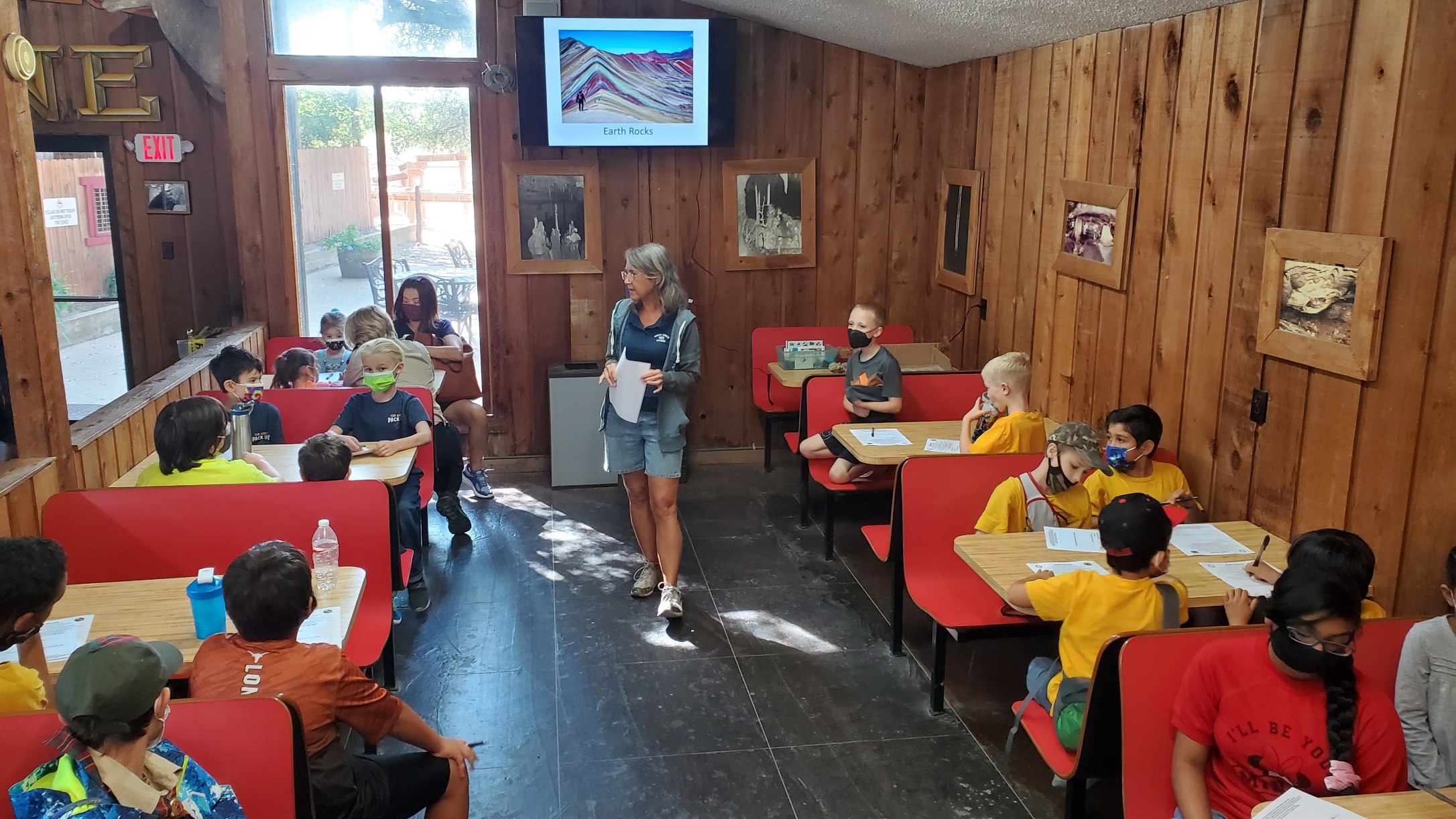
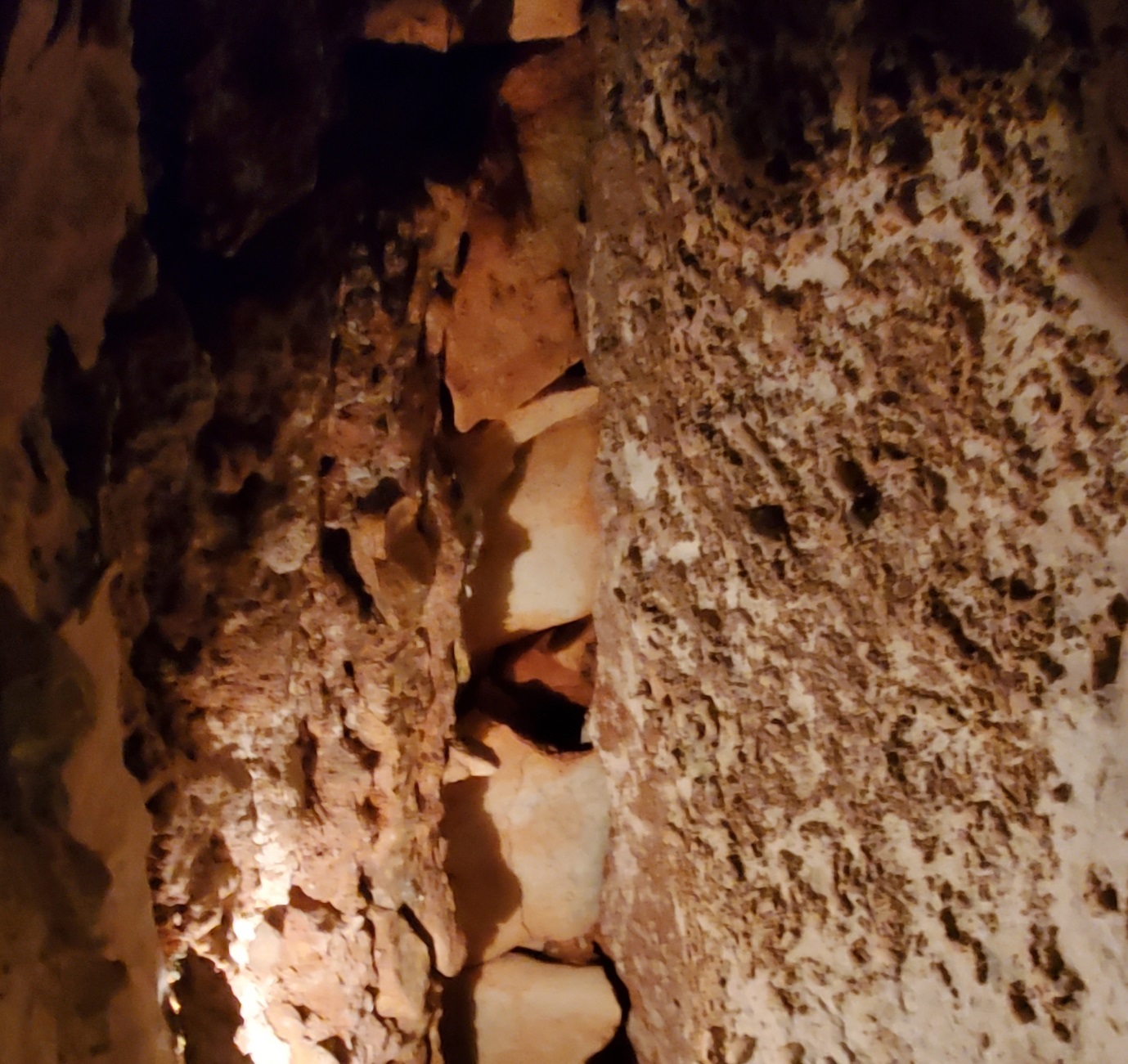
We learned about fault lines, magma, volcanoes, minerals, and other natural resources that are used in the construction of homes and structures. We also learned about how the landscape of Texas has changed since the mid-cretaceous period. Did you know that much of Texas, from Del Rio arcing north-eastward to Dallas, was under water when dinosaurs walked the earth? In fact, the same continental shaping that occurred during the formation of the Garden of the Gods outside of Colorado Springs began the process of shaping Texas into what it is now. More recently, the Balcones Faultline began to shift – 13 to 20,000 years ago – leading to the creation of sinkholes and huge quantities of water spilling through the local limestone.
As the water passed through the porous mineral rock it mixed with trapped carbon dioxide and became saturated with carbonic acid. The acid solution exited the limestone into hollowed out caverns, stripping away calcium from the rock surface, and allowing it to harden in droplet form both on the cavern ceiling, as well as in mounds on the cavern floor. These stalactites (holding tight to ceilings) and stalagmites (they might trip you) form fragile and ever-changing structures and decor in our caves and cavernous rooms.
S.T.E.M Fact
Photographs transcribe a 3-dimensional view into 2 dimensions, but our minds still perceive depth by using the size of familiar objects to estimate the distance and placement of the elements in the photo.
Click Here for More Perspective
DID YOU KNOW?:
– You can “kill” a cave rock formation. Oils and chemicals from our hands can actually bind to the surface of these different rocks, preventing the calcium from being stripped away. It is a 3rd degree felony in the state of Texas to touch the rock formations in our caves. Luckily, as scouts, we follow the outdoor code, respect nature, and leave no trace!
– Dolomite is a rock primarily made of calcium and magnesium. It absorbs water so fast that even as you pour water on it, the water disappears almost instantly. Where does it go???
Here are some achievements your Scouts can earn from a visit to Inner Space Caverns.
| In the picture below, how far is it to the back of the cavern? Is it 100 feet? 1000 feet? Without familiar objects in the picture to help our minds establish perspective, we have no way to know. Before CGI animation, Hollywood used this “trick” to make a scale model appear as a vast expanse or a lizard become a giant dinosaur. |
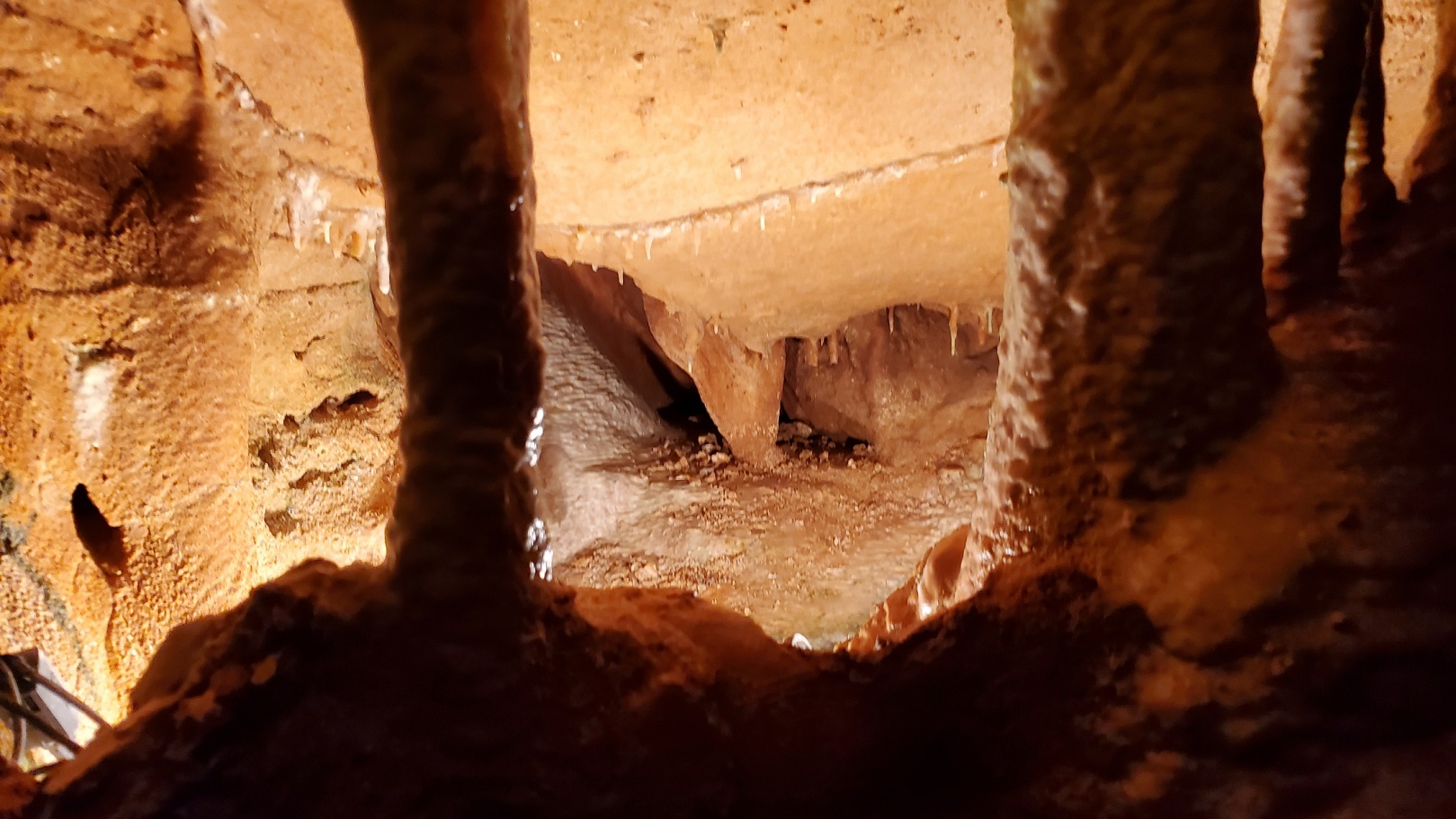 |
| It might surprise you to learn that it is only 5 to 6 feet to the back of this cavern. |
A visit to InnerSpace Caverns helps your Scouts’ advancement
Webelos: Earth Rocks adventure can be completed in its entirety.
NOVA -Down and Dirty:
Wolf, Bear and Webelos I & II scouts can complete the following Requirements:
Req. 2 – Option A – Complete two of the following. (a) Explain to your den or an adult what geology means. (b) Collect samples of igneous, sedimentary, and metamorphic rocks and explain how each was formed. (c) Collect samples of three minerals. Explain to your family or den what a mineral is and show and tell about the minerals you collected. (d) With your family or den, make a mineral test kit, and test minerals according to the Mohs scale of mineral hardness. Record the results.
Req. 3 – Option B –
1. What minerals are common in your state? Make a collection of three to five common minerals and explain how they are used.
2. Are these minerals found in sedimentary, igneous, or metamorphic rocks?
3. Explain or demonstrate the difference in formation of the three major types of rocks. Which types of rocks are common in your area?
4. Share your collection and what you have learned with your counselor.
Req. 4 – Option A –
Visit a place where earth science is being done, used, explained, or investigated, such as one of the following: cave, quarry or mine, geology museum or the gem or geology section of a museum, gem and mineral show, university geology department, TV or radio station meteorology department, weather station, volcano or volcano research station, or any other location where earth science is being done, used, explained, or investigated.
1. During your visit, talk to someone in charge about how people at the site use or investigate a particular area of science. How could this investigation make the world better?
2. Discuss with your counselor the science being done, used, explained, or investigated at the place you visited.
Req. 5 – Discuss with your counselor how earth science affects your everyday life.
REMAINING TASKS –
1. SCOUTS NEED TO READ or WATCH 60 minutes of a book or show about weather, geology, volcanoes, or oceanography.
2. MAKE A LIST of at least two questions or ideas about what they watched
3. Discuss those thoughts or questions with nova counselor (Cris)
We can make a quick 1-hour meetup to watch something, or you can encourage scouts to do some homework, and invite me (Cris) to the next den meeting to discuss.
Let’s get some NOVA patches awarded early!


